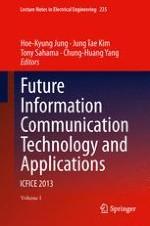2013 | OriginalPaper | Buchkapitel
70. An Analysis on the Effects of Cluster Leadership Rotation Among Nodes Using Least Temperature Routing Protocol
verfasst von : Nico Encarnacion, Hyunho Yang
Erschienen in: Future Information Communication Technology and Applications
Verlag: Springer Netherlands
Aktivieren Sie unsere intelligente Suche, um passende Fachinhalte oder Patente zu finden.
Wählen Sie Textabschnitte aus um mit Künstlicher Intelligenz passenden Patente zu finden. powered by
Markieren Sie Textabschnitte, um KI-gestützt weitere passende Inhalte zu finden. powered by
